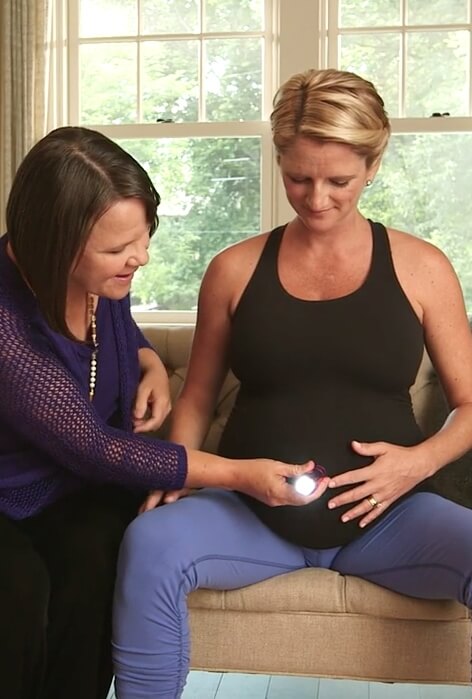Maternal Positioning is a phrase for talking about posture and positions for pregnancy and labor for comfort, baby’s position, or labor ease. Maternal positioning uses the 2nd Principle of Spinning Babies®: Gravity.
 Sitting up on the sitz bones is better for your back than resting back on your sacrum.
Sitting up on the sitz bones is better for your back than resting back on your sacrum.
Some of us believe that maternal positioning will influence the fetal position during pregnancy and birth. There is some evidence both for and against this view in the literature. At Spinning Babies® we put maternal positioning in perspective. Balance first! Use gravity by choosing smart maternal positions later.
In fact, we promote maternal position to preserve the supple and balanced muscles and alignment you will develop in our prenatal program of daily and weekly activities. We call maternal position “Rest SmartSM” and have an entire page for you under Techniques.
 Fetal Positioning is the phrase used to talk about the baby’s position in the womb and how to help baby into one of the easier positions to fit through the pelvis during birth.
Fetal Positioning is the phrase used to talk about the baby’s position in the womb and how to help baby into one of the easier positions to fit through the pelvis during birth.
Babies change position in pregnancy and during the birth process. True! That’s nature’s design!
But, fetal position changes are not random. There are multiple factors that come together to affect the fetal position changes.
If a woman’s womb is relatively balanced, then getting into gravity-friendly positions during pregnancy may help a breech baby to flip head down or a posterior baby to scoot over to the mother’s left side and face her right hip. If your own position selections don’t work, see our ebook, Helping Your Breech Baby Turn; page called flip-a-breech; or online course for pregnancy techniques and insights called Breech for Pregnant Parents. We also have a course for providers helping pregnant parents called Breech for Practitioners Package. All of these resources include body balancing techniques expectant parents themselves can do.
The time necessary for rotation may be shortened when a woman uses body balancing techniques and gravity-friendly maternal positions. Gravity-friendly positions are more likely to reposition baby if the womb is already in balance. Do you see how they are connected?
Some helpful maternal positions in pregnancy are:
Le Boursier du Coudray, Abre’ge’ (1773) “counseled … that women sleep on one side so that the opening of her womb, a bit off kilter, would be pulled by gravity into alignment with the vagina.” -The King’s Midwife; A history and Mystery of Madame du Coudray by Nina Rattner Gelbart
Some helpful maternal positions in labor are:

Adding your instinctive movements is an excellent way to “tune in” to what your body needs to do to respond to your labor.
From Christine Kent, RN “..How our spine is is primary, but how the abdominal wall is is equally primary. We’re a whole tension-compression system. The whole thing works in harmony. There are really no parts in this system; it is a whole.
Katy Bowman Says on her Facebook called Aligned and Well: “I’ve said this before, but it can’t be said too many times: Posture does not equal alignment. Posture is how something looks. Alignment is how something works. Katy has got a lot to say, and you may learn a lot from visiting her website.
Find more details on our Rest SmartSM page!
Gravity-friendly positions are rarely enough! Add movement to increase flexibility and reduce pain. Before either, add Balance to help both Gravity and Movement ease birth.